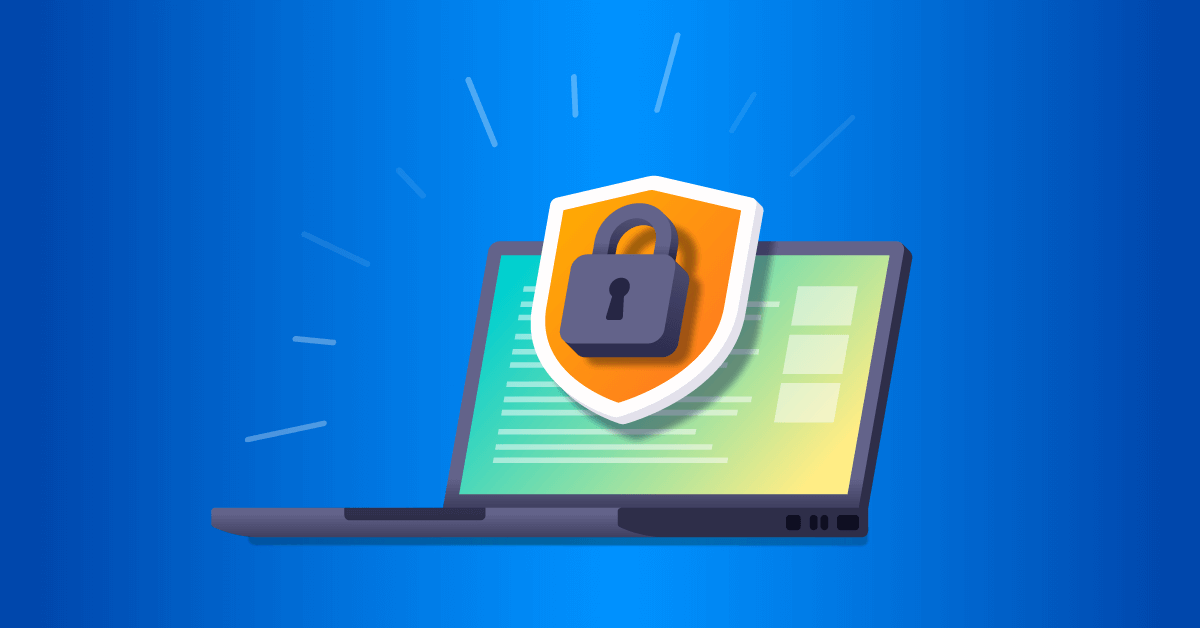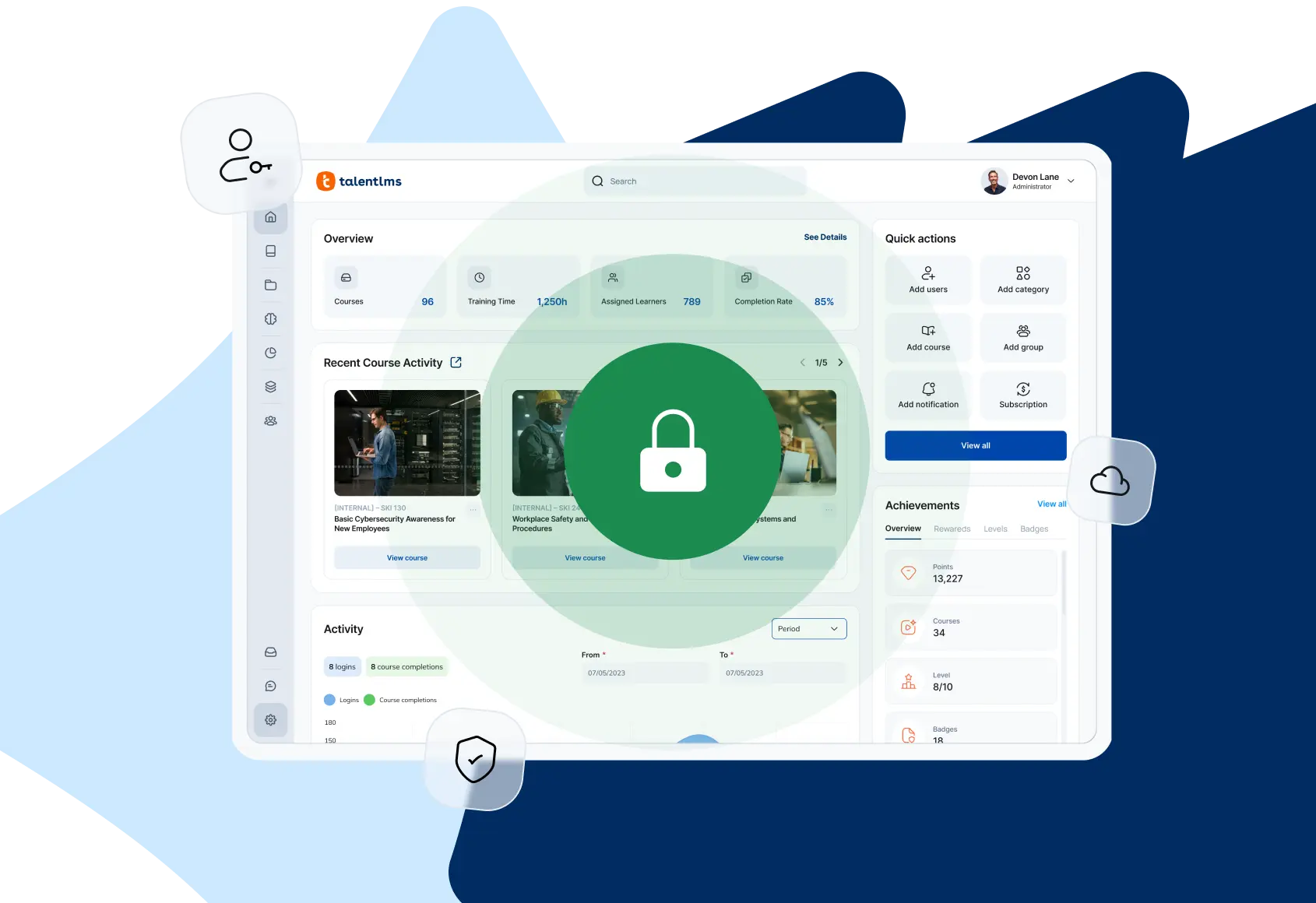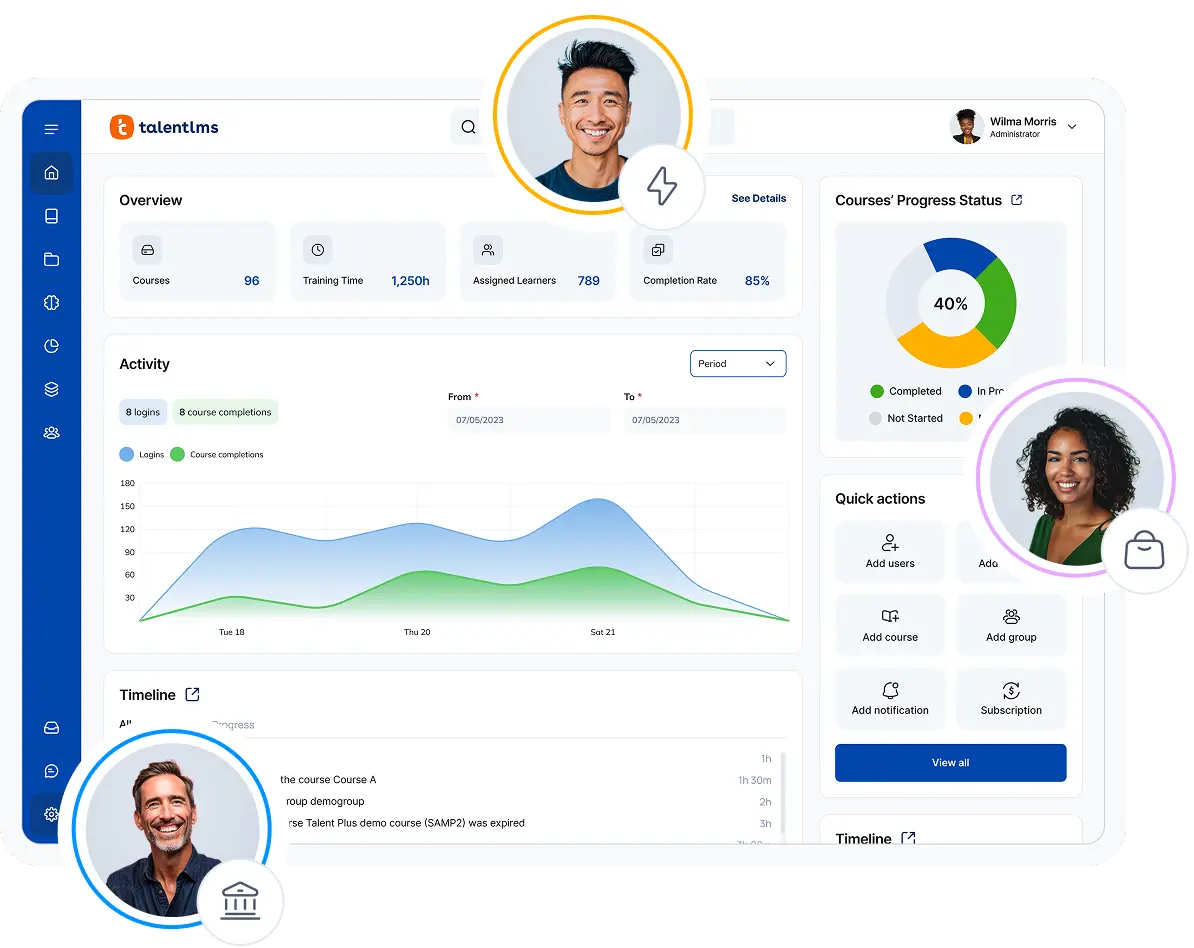The consequences of modern cyber attacks are catastrophic. A single breach can trigger a cascade of failures, grinding operations to a halt, and costing millions in fines and legal fees. Beyond the financial damage, it can destroy years of customer trust and severely damage a company’s reputation.
Beyond the immediate financial damage, an attack destroys years of customer trust and severely damages the company’s public reputation.
Cybersecurity training directly confronts these risks. An effective training program that includes targeted cybersecurity courses, educates all staff on common cyber threats, and promotes safe digital practices. It shows employees how to identify phishing emails, use strong passwords with multifactor authentication, and report any suspicious activity through clear, established channels.
This blog will show you how to build a vigilant, security-aware culture throughout the organization.

10 essential cybersecurity training topics for employees:
- Phishing awareness
- Password and authentication security
- Malware & viruses
- Data protection & privacy
- Secure remote working & mobile security
- Network, cloud & Wi-Fi security
- Social engineering
- Incident response & disaster recovery
- Threat monitoring, vulnerabilities & pen testing
- Compliance, governance & audits
Why is cybersecurity training now more important than ever?
Cyberattackers now use sophisticated social engineering and AI (artificial intelligence) to target employees with incredible precision. The 2024 Verizon Data Breach Investigations Report confirms this, finding that 68% of all breaches involve a non-malicious human element.
The attackers now also have various avenues to target companies. Firstly, widespread adoption of remote work and cloud-based systems has dramatically expanded the attack surface for many companies. Employees access company networks from countless locations, creating new vulnerabilities.
Secondly, the line between personal and work devices has blurred. Employees frequently use their own smartphones, tablets, and laptops for sensitive tasks, a practice known as Bring Your Own Device (BYOD). Each personal device represents a new, often less secure, entry point into the company’s network.
The value of the sensitive data being targeted also raises the stakes. For example, in the software industry, teams handle immense amounts of proprietary code and sensitive customer data across these distributed environments. Protecting that information requires constant employee vigilance, especially concerning data privacy.
Our most vital services face the same security challenges. Sectors like healthcare and finance represent high-value targets where a breach can cause widespread disruption. The dangerous combination of advanced threats, a distributed workforce, and high-stakes data makes continuous employee security training an essential business function.
 Dimitris Damaskos
Dimitris Damaskos
Specialized in data privacy, legal compliance, and secure workplace practices, Dimitris helps organizations protect sensitive information and train employees to stay cyber-aware.
Expert Tip: Embed Security Habits Into Everyday Employee Behavior
Cybersecurity is most effective when it becomes part of the daily routine and not just something employees think about during annual training. Here are key tips to help employees turn awareness into consistent action:
- Make security part of onboarding and role-specific training: Tailor cybersecurity content to reflect the risks relevant to each department, not just general policies.
- Normalize reporting and response: Promote a no-blame culture where employees are encouraged to report mistakes, suspicious activity, or phishing attempts without fear.
- Use bite-sized, recurring training moments: Reinforce critical behaviors like MFA usage, phishing identification, and software update prompts through regular nudges and microlearning.
Takeaway: When security becomes a shared, everyday responsibility, the workforce becomes your strongest firewall, not your weakest link.
10 Cybersecurity training topics
The following security awareness training topics (also known as cybersecurity awareness topics) form the foundation of any strong training program. Use these to equip employees to recognize and report the most common attacks they’re likely to encounter in their roles.
1. Phishing awareness
Phishing attempts are a type of scam where an attacker uses a deceptive email, message, phone calls, or website to trick a person into revealing sensitive information or deploying malware.
Since the start of the digital age, common phishing tactics have remained a primary method for initiating data breaches. According to Verizon’s 2024 report, the median time for a person to click a malicious link or email attachment in a phishing email is less than 60 seconds, leaving almost no time to prevent a mistake.
To counter this speed, employees should complete dedicated phishing awareness training to spot and report cyber threats early.
2. Password and authentication security
Password and authentication security covers the methods used to verify a user’s identity, from creating hard-to-guess passwords to applying multiple layers of confirmation.
Stolen or reused passwords are a common entry point for attackers. The best defense goes beyond basic password security by using multi-factor authentication, which, according to Microsoft, reports that using MFA blocks over 99.9% of all account compromise attacks.
Employees must learn to create long, unique passwords for every service and use multifactor authentication on all company accounts as a standard practice.
3. Malware and viruses
Malware is malicious software, including viruses and ransomware, designed to disrupt operations, steal private data, or gain unauthorized control over computer systems.
Malware attacks like ransomware can completely halt business operations for weeks. According to IBM’s 2024 Cost of a Data Breach Report, the average financial impact of a single ransomware breach now exceeds $5.3 million.
Training shows employees how to recognize and avoid suspicious links or downloads, and these practices are also covered in TalentLMS’s ready-made cybersecurity courses.
4. Data protection and privacy
Data protection is the practice of safeguarding sensitive company and customer information, including personal details and internal documents, from unauthorized access or misuse.
Failing to comply with privacy laws like the GDPR results in severe financial penalties. In 2023, for example, Meta was fined a record €1.2 billion for violating data transfer regulations.
Avoiding these outcomes requires every employee to know and follow their company’s specific data handling and encryption policies.
5. Secure remote working and mobile security
Secure remote working involves the security practices required to protect sensitive data when employees work outside the office on home networks, public Wi-Fi, or mobile devices.
The shift to remote from hybrid work introduces device security challenges and higher financial risks. IBM’s 2024 report found that data breaches involving a remote work factor cost companies an average of $179,000 more than those without it.
Employees need to be trained to always use a company VPN, secure their home Wi-Fi networks, and strictly follow all Bring Your Own Device (BYOD) policies.
6. Network, cloud, and Wi-Fi security
Network, Cloud, and Wi-Fi Security covers the practices and tools, like VPNs and firewalls, used to secure a company’s digital connections from its internal network to the cloud.
Misconfigured cloud services are a frequent and disastrous point of failure. Gartner forecasts that through 2025, 99% of all cloud security failures will be the customer’s fault, highlighting the risk of human error.
Employees must learn to always use a VPN on public Wi-Fi and to immediately report any suspicious network activity.
7. Social engineering
Social engineering is the use of psychological manipulation to trick people into divulging confidential information or taking actions that bypass security controls.
Psychological manipulation can completely neutralize technical defenses. The estimated $100 million MGM Resorts breach was initiated by a simple social engineering phone call to the company’s help desk.
Employees must be trained to recognize psychological pressure and to independently verify any unexpected or urgent requests for information.
8. Incident response and disaster recovery
Incident response is the company’s formal plan for containing, managing, and recovering from a security breach, from the first alert to the full restoration of services.
A fast and practiced response dramatically reduces the financial damage of an attack. IBM’s 2024 report found that organizations with mature incident response planning and testing save an average of $1.47 million on breach costs.
A core competency for every employee is knowing exactly who to notify and what immediate steps to take the moment they suspect an incident.
9. Threat monitoring, vulnerabilities, and pen testing
Threat monitoring and vulnerability management are the proactive parts of security, including the continuous search for new threats, the patching of software weaknesses, and the regular testing of company defenses.
Patching known weaknesses is a race against time. When the Log4Shell vulnerability was disclosed in 2021, for example, attackers began exploiting it within hours, long before many companies could apply a fix.
Employees must understand that security updates are urgent and should restart their computers promptly when prompted by IT to apply patches.
10. Compliance, governance, and audits
Compliance and governance refer to the official policies, industry rules, and regular audits a company follows to ensure its security practices meet legal and business standards.
For many businesses, following these rules is not optional. Violating the PCI DSS standard for handling credit card data, for instance, can result in fines from $5,000 to $100,000 per month.
Training must confirm that any employee handling sensitive information understands the specific compliance requirements relevant to their role.
How to build a successful security awareness training program
Successful security programs are built as continuous campaigns. The science of learning shows why the once-a-year training model fails, as studies on the Forgetting Curve reveal that people can forget up to 90% of what they learn in a single session within a month.
Instead, keep enhanced security awareness top of mind with a mix of engaging content. Use short videos, interactive quizzes, and regular phishing simulations to reinforce knowledge over time. The goal is to choose formats aligned with the best employee training methods.
Support this ongoing effort with a clear and consistent communication plan that keeps employees informed and motivated. To build your program’s foundation and announce its launch, you can get started quickly with this free cybersecurity training template.
From training to trust
The ultimate defense against modern, human-targeted cyber attacks is a workforce unified by a shared sense of responsibility. Such a culture creates collective confidence, empowering people to protect the business and each other.
The result is profound trust at every level. Employees feel secure and empowered, while leadership gains confidence in the organization’s resilience. An organization with that kind of internal stability projects strength, cementing its reputation as a reliable partner for customers and stakeholders.
Building this culture of trust is an ongoing commitment. The journey starts with a platform designed to give your people the right skills and confidence. You can deliver all these topics seamlessly with TalentLMS, a powerful cybersecurity training software built for modern teams.
| Tags: Cybersecurity training topics





